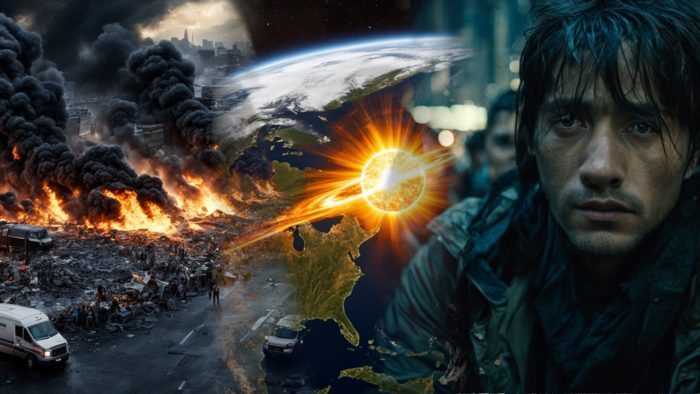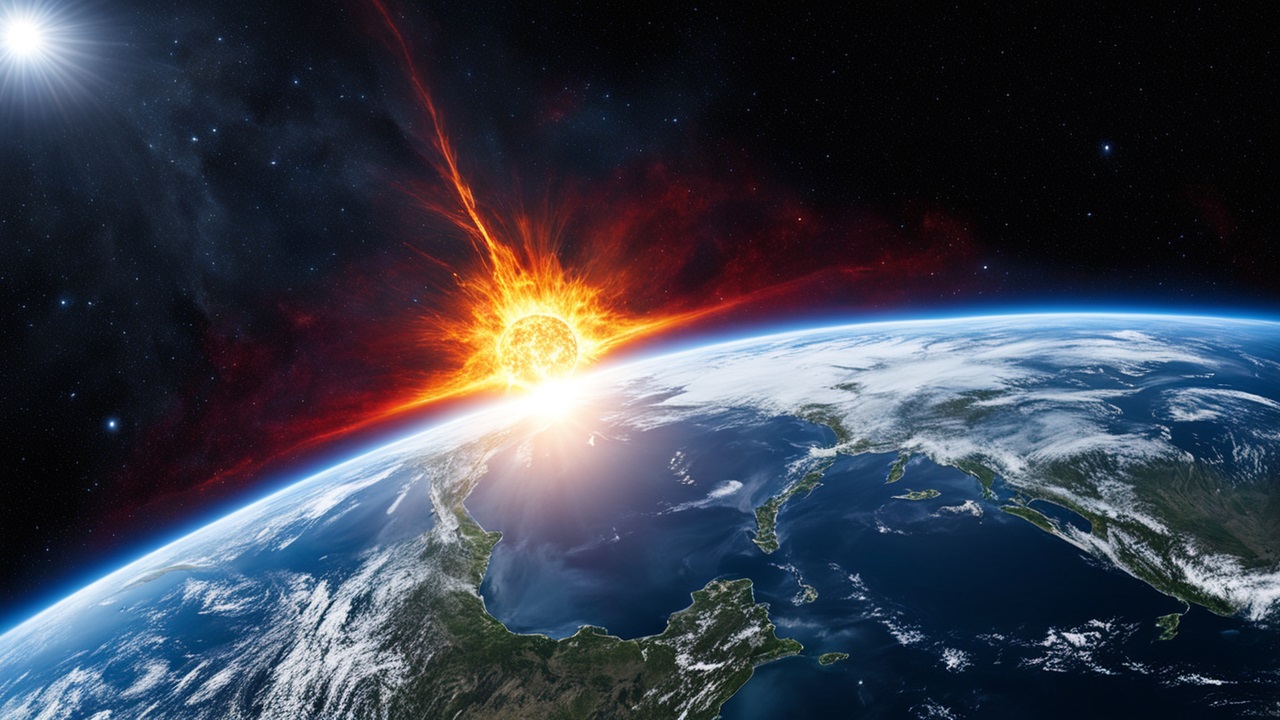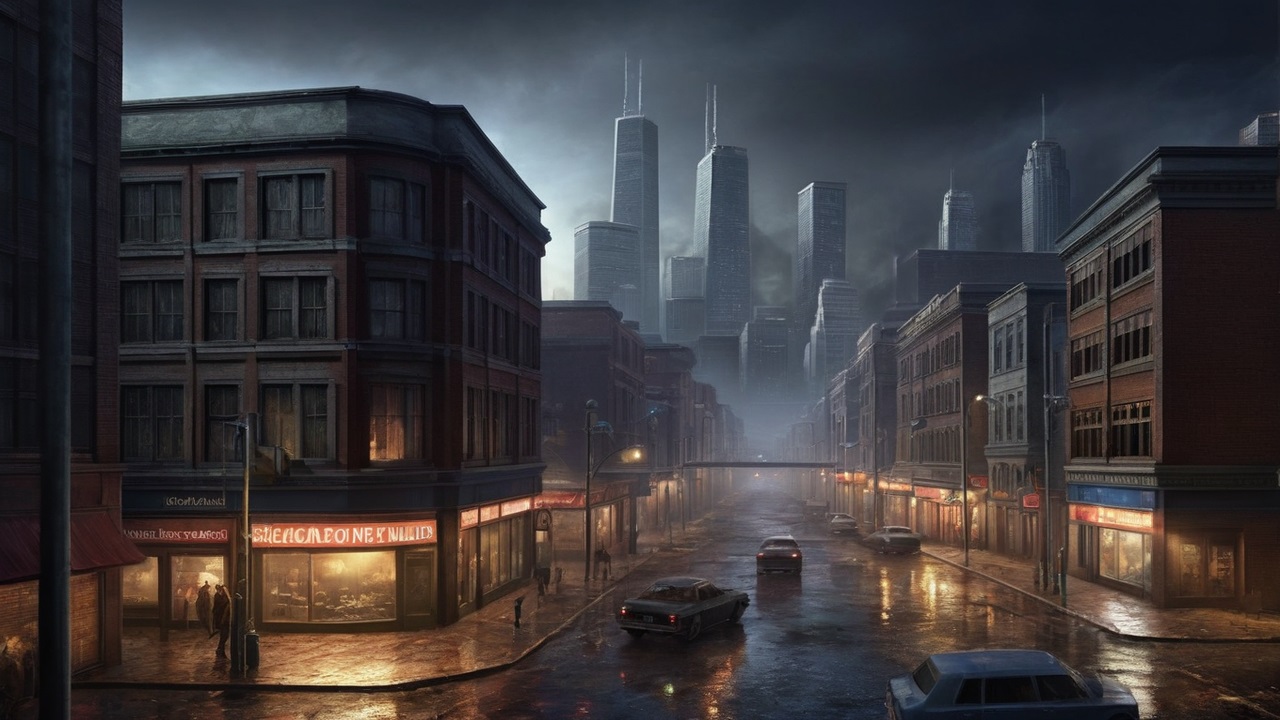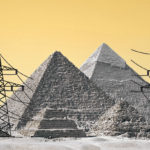
Losing The Electrical Grid Could Be Disaster For All Of Us!
- By
- September 1, 2024
- August 30, 2024
- 9 min read
- 1
- Posted in
- Space, Our Solar System
What would occur if the global electrical grid were suddenly wiped out? Would this be a mere temporary disruption that authorities could resolve within hours or, at most, a few days? Or would the repercussions of such an event be much more severe and widespread? Moreover, the most likely cause of this potential grid failure lies in the forces of the universe, forces beyond our control, such as a solar flare—a phenomenon that could impact our planet at any given moment.

The fact is, most of us would agree that human existence – both individually and collectively – is a precarious thing. However, it is a good assumption that most of us perhaps don’t realize just how precarious it is. As we will explore here, if a solar flare was the strike the Earth, while we probably wouldn’t realize it immediately, the consequences would be potentially disastrous, and most certainly life-changing. In fact, such an event would likely take humanity back at least a century, if not more, and would do so in a matter of weeks, at best.
Indeed, while most of us perhaps don’t think of the marvel of electricity and what it truly does for us too deeply, if we should suddenly lose such power, especially if it were to happen from such a likely event as a solar flare, we would miss it immediately.
Contents
- 1 The Very Real Danger Of A Solar Flare
- 2 The Carrington Event
- 3 Auroras That Might Be Missed
- 4 Violent Overloads And Power Outages
- 5 Societal Infrastructure Would Collapse
- 6 Many Different Dangerous Scenarios
- 7 Immediate Shortages Of Cash And Food
- 8 Immediate Cut-Off Of Fuel
- 9 Large-Scale Unrest
- 10 A Quickly Evolving Post-Apocalyptic World
- 11 The 2012 Event
- 12 A Desperate Need To Prepare
The Very Real Danger Of A Solar Flare
There are numerous potential causes for a sudden failure of the electrical grid—such as an asteroid impact, nuclear conflict, or a major system breakdown. However, one of the most likely and often overlooked causes could be a solar flare from the Sun.
The Sun, which provides life and energy to our planet, occasionally emits powerful solar flares. While these cosmic events are fascinating to observe, a massive solar flare directed toward Earth could have profound effects on our modern technological society.
Solar flares are intense eruptions of high-energy particles from the Sun’s surface. The energy released during a solar flare can be equivalent to the explosion of millions of hydrogen bombs. The impact on Earth, however, would depend on factors like the flare’s intensity, direction, and proximity.

A massive solar flare hitting Earth could threaten our dependence on electricity. The primary risk lies in the disruption of power grids, satellites, and electronic systems. The powerful burst of electromagnetic energy from a solar storm can induce strong currents in long conductors, like high-voltage power lines, damaging transformers and substations.
Satellites, which are crucial to modern life by supporting global communication, navigation, weather forecasting, and more, would also be at risk. During a solar storm, increased radiation levels and charged particles can disrupt satellite operations, leading to signal loss, GPS navigation issues, and potential damage to onboard electronics.
Another major concern is the disruption of communication networks. Cellular networks, internet services, and landline systems could experience interruptions due to the interference caused by a solar storm. These disruptions could have serious consequences for various sectors, including aviation, shipping, and emergency response coordination.
The Carrington Event
Let’s take a step back to September 1859, a century and a half ago, when a colossal solar storm last struck our planet. Known as the Carrington Event—named after British astronomer Richard Carrington, who observed it—this solar storm remains the most powerful on record. Despite the technological limitations of that era, the event offered significant insights into how such a severe solar storm could affect our electrical infrastructure.

During the Carrington Event, a massive coronal mass ejection from the Sun bombarded Earth’s magnetosphere. This intense wave of charged particles disrupted the planet’s magnetic field and generated powerful currents in long telegraph wires. The resulting surge in electric current caused telegraph lines to spark, and in some instances, even start fires.
Telegraph operators reported receiving electric shocks from their equipment, and despite disconnecting their batteries, they were still able to send messages using the auroral currents induced in the lines. Some operators even witnessed telegraph paper spontaneously catching fire due to the electrical overload.
Auroras That Might Be Missed
One of the most striking effects of the Carrington Event was the appearance of auroras, or the Northern and Southern Lights, in regions far beyond their usual range. These widespread and vibrant auroras were seen as far south as the Caribbean, with some people mistaking the vivid red and green lights for city fires.
While this mid-nineteenth-century event didn’t bring about an apocalyptic scenario, it’s important to remember that the technological landscape during the Carrington Event was vastly different from what it is today. The telegraph was the primary means of long-distance communication, and our dependence on electricity was much lower.
Today, a solar storm of the same magnitude as the Carrington Event would present significant challenges to our electricity-dependent society. The electrical grid, satellite networks, communication systems, and electronic infrastructure would be highly vulnerable to damage.
Violent Overloads And Power Outages
Considering this, what would the specific consequences be for Earth’s population if an intense solar strike, like the one in 1859, were to occur today? Let’s examine how such a potentially disastrous event might unfold.
In our modern era, scientists regularly monitor and collect data from the Sun. They would likely detect a significant solar flare 12 to 18 hours before it reached Earth, as they would observe a substantial explosion on the Sun’s surface.

When the solar flare hits, auroras would light up the skies as far south as the equator, painting the heavens in magnificent shades of green and red. Simultaneously, there would be catastrophic damage to our electrical infrastructure. The intense burst of electromagnetic energy and high-energy particles could overload power lines, transformers, and other critical components of the electrical grid, crippling the system and causing widespread, sudden power outages.
In areas with large power lines and facilities, this could result in explosions of various sizes. In homes, not only would there be blackouts, but many electrical devices could short out, potentially giving small electric shocks. Even small appliances, like laptops or toasters, could catch fire. These small fires could quickly escalate into larger blazes, adding to the chaos that would ensue.
Societal Infrastructure Would Collapse
The loss of electricity would trigger a chain reaction affecting critical infrastructure. Hospitals, water treatment plants, transportation systems, and emergency services would be severely impacted. Life-sustaining medical equipment would stop functioning, putting patient care at risk. Water supplies could dwindle as pumps fail, leading to serious sanitation concerns. Transportation systems would come to a standstill, disrupting supply chains and essential services.

The collapse of the electrical grid would also cripple communication networks. Cellular towers, internet services, and landline systems depend heavily on electricity, and their failure would disrupt the flow of information. Emergency communication channels would be compromised, hampering rescue efforts and public coordination. The lack of communication would only heighten the sense of isolation and chaos.
Numerous alarming scenarios could unfold. People on underground trains at the time of the outage might find themselves temporarily trapped, as electrically powered trains would suddenly stop. Diesel-powered trains could continue moving under their own power, but disruptions to electrical signals could cause track switches to malfunction. If unnoticed, this could result in two trains hurtling toward each other on the same track, leading to a high-speed collision.
Those unfortunate enough to be in an elevator during the outage could find themselves trapped between floors—potentially for an extended period, which could be life-threatening.
Many Different Dangerous Scenarios
The impact wouldn’t be limited to those on the ground. Airports worldwide would activate emergency power generators in an effort to safely land any aircraft nearby. However, these generators would only function for a limited time before failing. Adding to the danger, the aircraft’s GPS and navigation systems would no longer work, leaving pilots essentially flying blind. This raises the grim possibility that some of these planes might not make it safely to the ground.

In short, thousands, if not tens of thousands, of lives could be lost within hours, possibly even minutes, after the solar flare hits the planet—all due to the sudden collapse of the global electrical grid.
Meanwhile, in most major cities and towns, with communication and satellite systems down, many people would likely assume they were experiencing a temporary blackout, expecting normal service to resume within hours. Only scientists and government officials would understand the true gravity of the situation.
The sudden power loss and the ensuing collapse of infrastructure would also have devastating economic consequences.
Immediate Shortages Of Cash And Food
Although it wouldn’t happen overnight, industries would gradually come to a standstill, leading to widespread unemployment and financial hardship. Without electricity, the manufacturing, agriculture, and transportation sectors would suffer, resulting in shortages of essential goods and services. Financial markets would be thrown into disarray, causing widespread instability and uncertainty.

The food supply would be immediately affected. While most countries have regional food reserves that could last about a month, after two to three days, the generators keeping this food fresh would fail. As a result, whatever food remained would begin to spoil. Even if food were available for purchase, the downed electrical grid would render bank card payments impossible, leaving only those with cash able to buy products.
In the aftermath of a catastrophic solar flare, societal reactions would vary. Initially, confusion and disbelief would dominate as people struggled with the sudden loss of familiar conveniences. Panic-buying and hoarding could lead to shortages and civil unrest, eventually giving way to widespread looting in major cities.
As the crisis drags on, the breakdown of law enforcement and emergency services could heighten security concerns, possibly leading to the imposition of martial law in some areas.
Immediate Cut-Off Of Fuel
Access to food wouldn’t be the only issue; fuel would also become a significant problem. Petrol would be trapped in pipelines and pumps at petrol stations, both of which rely on electricity to operate. People would be desperate for petrol not only for their cars but also for diesel generators they might have.
Humanity’s response to such a catastrophic event would be crucial for survival and recovery. Many engineers and scientists believe that if the electrical grid were lost in this way, it wouldn’t be a simple matter of repairing and rebooting. Restoring the electrical system could take decades, according to some estimates. This is likely accurate given that the massive electrical transformers that are the backbone of the global grid take about two years each to build.

Local communities would strive to adapt and collaborate to meet basic needs. Small-scale alternative energy sources, such as solar and wind power, could be utilized. Communities might establish local networks for communication, resource-sharing, and self-governance. Mutual support and resilience-building would become essential, though this cooperative spirit might only last for a limited time.
The only individuals who might initially feel prepared for the situation would be those who have stored supplies and have access to diesel generators—often referred to as preppers. However, as food and resources became scarcer and desperation grew, these preppers could quickly become targets for those in need.
Large-Scale Unrest
Indeed, world governments would face immense challenges in attempting to restore order and functionality. Emergency response efforts would focus on prioritizing essential services and repairing critical infrastructure. International cooperation would be vital, as affected regions might require aid and resources from less impacted areas.
Scientific research and technological advancements would be hastened to improve space weather monitoring and early warning systems. However, these efforts would likely come too late. Anarchy would likely spread through every major city, while rural areas might resemble a mix of a post-apocalyptic world and the wild west, where people would need to take survival into their own hands.

It’s no exaggeration to say that society as we know it would begin to break down, and civilization would start to crumble within weeks. Further challenges would also emerge for the remnants of humanity. As emergency generators fail, oil refineries and power stations could start to explode, creating toxic zones and winds that could poison and kill thousands more.
Additionally, the failure of electrical systems that have helped control tropical diseases like malaria could lead to their resurgence—likely stronger than before—causing further loss of life in tropical regions. Those living in sunbelt regions would find their homes unable to protect them from the extreme heat without electrical cooling systems, while people in colder areas, especially during winter, would face the prospect of freezing to death without any means of heating.
A Quickly Evolving Post-Apocalyptic World
At this point, the full extent of humanity’s dependence on electricity would become glaringly apparent. Most people would lack essential survival skills, hunting abilities, or knowledge of self-preservation. Additionally, many of the world’s water systems would be contaminated and disease-ridden, making it nearly impossible to obtain fresh drinking water in some areas.
Within a few months, many major cities would become virtually deserted, with vegetation beginning to reclaim the abandoned urban landscapes.
Ultimately, those who survive the first year without electricity would start to form small communities, possibly relying on limited power from homemade generators. While these communities might grow and develop their capabilities over time, humanity would be far from returning to the modern world it once knew before the speculative solar flare struck—potentially remaining so for centuries.
The 2012 Event
So, how likely is it that such an event could actually occur? We know it has happened before, in 1859, and the limited reliance on electricity at that time prevented it from becoming a major catastrophe. Moreover, this is only the earliest recorded instance of such a solar event.
In reality, Earth has likely experienced dozens of similar solar flares throughout human history. What sets our contemporary era apart is our complete dependence on electricity, which makes us far more vulnerable to the effects of such a solar storm today.
Scientists believe we are overdue for one of these events, with estimates suggesting that Earth encounters a significant solar flare approximately once every 100 years. Given that it has been over 150 years since the last major event, this should give us pause for concern.

For instance, in July 2012, Earth narrowly avoided a potentially catastrophic solar storm. A massive coronal mass ejection was released from the Sun and barely missed our planet. Had this coronal mass ejection collided with Earth, it could have caused severe consequences for our electricity-dependent society, including widespread power outages and disruptions to critical infrastructure.
Such an intense burst of electromagnetic energy could have induced powerful currents in long conductors, damaging transformers and other crucial components of power grids. The impact would have been significant, with industries, transportation systems, communication networks, and essential services facing prolonged disruptions.
A Desperate Need To Prepare
Ultimately, the near miss in 2012 served as a crucial wake-up call, highlighting the need for improved preparedness and mitigation strategies. Enhancing monitoring systems, strengthening infrastructure protection, and developing robust contingency plans are vital to reducing the potential damage from a major solar storm.
Investing in research and technological advancements is essential for better forecasting space weather, providing timely warnings, and enabling proactive measures. However, progress in this area has been slower than anticipated, and significant work remains before we are adequately prepared for such a powerful natural event.
While a worst-case scenario involving a direct hit from a major solar flare that causes an immediate collapse of the electrical grid poses tremendous challenges, it’s important to recognize that human resilience, adaptability, and cooperation could play key roles in recovery. Despite the daunting nature of this scenario, history demonstrates that humanity has the capacity to endure and rebuild in the face of adversity, ultimately forging a more resilient future.
Nonetheless, without substantial improvements to infrastructure and comprehensive planning, that future would be markedly different from our present state.
The video below explores the consequences of losing the electrical grid a little further.
Fact Checking/Disclaimer
The stories, accounts, and discussions in this article may go against currently accepted science and common beliefs. The details included in the article are based on the reports, accounts and documentation available as provided by witnesses and publications - sources/references are published above.
We do not aim to prove nor disprove any of the theories, cases, or reports. You should read this article with an open mind and come to a conclusion yourself. Our motto always is, "you make up your own mind". Read more about how we fact-check content here.
Copyright & Republishing Policy
The entire article and the contents within are published by, wholly-owned and copyright of UFO Insight. The author does not own the rights to this content.
You may republish short quotes from this article with a reference back to the original UFO Insight article here as the source. You may not republish the article in its entirety.





1 Comment
UFO Insight does not take responsibility for the content of the comments below. We take care of filtering profanity as much as we can. The opinions and discussion in the comments below are not the views of UFO Insight, they are the views of the individual posting the comment.
Newest comments appear first, oldest at the bottom. Post a new comment!
What ifs.. being hearing them since grammar school.. imminent threat of worldwide drought, Gore said NY and Florida cites suppose to be underwater by now.. of course it’s the backbone of U.S. Liberal party today—mandating implementation of electric stoves and water heaters (made in China), and electric car for all homes—-the Threats have gotten so bad, it’s been necessary to let criminals out of jail, put men in high school women’s bathrooms, declare war on Russia, suddenly discover Israel has displaced 14 million Palestines from their homes killing millions of children, women, and men in the due process of Israel Peace March—now one party in U.S. is running a full blown communist! I leave it to you to connect the dots to global warming. Only now our UFO master himself is selling wholesale sun/space threat to the idea of electric life and electric grid… My question is, when are they going to require a vaccine for it.. fear?